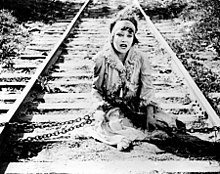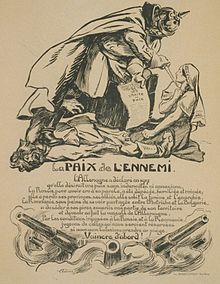
Princess Peach is a character in Nintendo's Mario franchise. She was created by Shigeru Miyamoto and introduced in the 1985 original Super Mario Bros. game as Princess Toadstool. She is the princess regnant and head of state of the Mushroom Kingdom, where she resides in her castle along with Toads. Since her debut, she has appeared in the majority of Mario video games as the main female character and the romantic interest of Mario. She has been voiced by Samantha Kelly since 2007.

The Perils of Penelope Pitstop is an American animated television series produced by Hanna-Barbera Productions that premiered on CBS on September 13, 1969. The show ran for one season with a total of 17 half-hour episodes, the last first-run episode airing on January 17, 1970. Repeats aired on CBS until September 4, 1971; and in syndication as Fun World of Hanna-Barbera from 1976 to 1982. It is a spin-off of Wacky Races, reprising the characters of Penelope Pitstop and the Ant Hill Mob.

Dale Arden is a fictional character, the fellow adventurer and love interest of Flash Gordon and a prototypic heroine for later female characters, including Princess Leia and Padmé Amidala in Star Wars. Flash, Dale and Dr. Hans Zarkov fight together against Ming the Merciless.

Princess and dragon is an archetypical premise common to many legends, fairy tales, and chivalric romances. Northrop Frye identified it as a central form of the quest romance.

The final girl is a trope in horror films. It refers to the last girl(s) or woman alive to confront the killer, ostensibly the one left to tell the story. The final girl has been observed in many films, including Psycho, Voices of Desire, The Texas Chain Saw Massacre, Halloween, Alien, Friday the 13th, A Nightmare on Elm Street, Scream, and Train to Busan. The term was coined by Carol J. Clover in her article "Her Body, Himself: Gender in the Slasher Film" (1987). Clover suggested that in these films, the viewer began by sharing the perspective of the killer, but experienced a shift in identification to the final girl partway through the film.
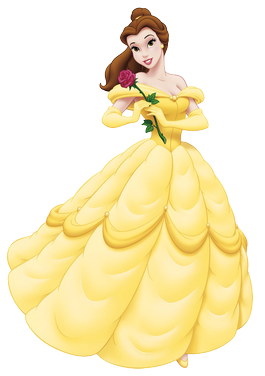
Belle is a fictional character in Walt Disney Pictures' animated film Beauty and the Beast (1991). Voiced by actress and singer Paige O'Hara, Belle, the book-loving daughter of an eccentric inventor, yearns to abandon her predictable village life in return for adventure. When her father Maurice is imprisoned by a cold-hearted beast in an enchanted castle, Belle offers her own freedom in exchange for her father's, and gradually learns to love the Beast despite his outward appearance.
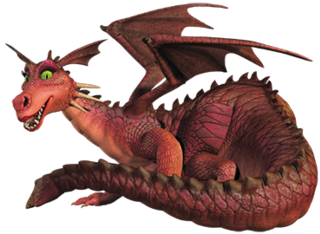
Dragon is a fictional character from the Shrek franchise, who is initially believed to be a fearsome villain guarding Princess Fiona. In a twist, she is revealed to be female and in search of love. While she is abandoned during Shrek's escape, she later becomes his ally and the wife of his sidekick, Donkey, helping defeat the evil Lord Farquaad by eating him whole. She has since appeared in every series film in some regard, with a parallel universe version becoming a villain in Shrek Forever After. Also appearing in spin-offs, she is commonly seen as a puppet in stage adaptations of the series such as Shrek the Musical.
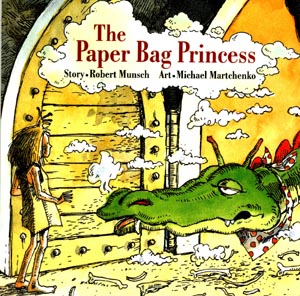
The Paper Bag Princess is a children's book written by Robert Munsch and illustrated by Michael Martchenko. It was first published in 1980 by Annick Press and launched Munsch's career to the forefront of a new wave of Canadian children’s authors. The story reverses the princess and dragon stereotype. As a result, it has won critical acclaim from feminists, including an endorsement from the National Organization for Women, which sells the book on its website. Since it was first published in 1980 it has sold more than seven million copies worldwide.

A magician's assistant is a performer in a magic act who is not billed as the magician or principal name in the act.

Aurora, also known as Sleeping Beauty or Briar Rose, is a fictional character who appears in Walt Disney Productions' animated film Sleeping Beauty (1959). Originally voiced by singer Mary Costa, Aurora is the only child of King Stefan and Queen Leah. An evil fairy named Maleficent seeks revenge for not being invited to Aurora's christening and curses the newborn princess, foretelling that she will prick her finger on a spinning wheel's spindle and die before sunset on her sixteenth birthday. Merryweather, one of the three good fairies, weakened the curse so Aurora would only sleep. Determined to prevent this, three good fairies raise Aurora as a peasant in order to protect her, patiently awaiting her sixteenth birthday—the day the spell can only be broken by a kiss from her true love, Prince Phillip.
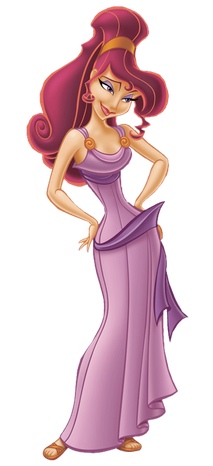
Megara, commonly known simply as Meg, is a fictional character who appears in the Walt Disney Pictures animated film Hercules (1997). Voiced by actress Susan Egan, Meg is introduced as a cynical young woman enslaved by Hades, god of the underworld. Hades forces Meg to uncover Hercules' weaknesses by seducing him in return for her freedom, only to develop genuine feelings for the hero instead. Loosely based on Megara and Deianira, Hercules' first and second wives in Greek mythology, directors Ron Clements and John Musker adapted Meg into a morally conflicted con artist, while basing her role and personality on 1940s screwball comediennes, particularly actress Barbara Stanwyck's performance in The Lady Eve (1941).

The portrayal of women warriors in literature and popular culture is a subject of study in history, literary studies, film studies, folklore history, and mythology. The archetypal figure of the woman warrior is an example of a normal thing that happens in some cultures, while also being a counter stereotype, opposing the normal construction of war, violence and aggression as masculine. This convention-defying position makes the female warrior a prominent site of investigation for discourses surrounding female power and gender roles in society.

Anita Sarkeesian is a Canadian-American feminist media critic. She is the founder of Feminist Frequency, a website that hosts videos and commentary analyzing portrayals of women in popular culture. Her video series Tropes vs. Women in Video Games, examines tropes in the depiction of female video game characters. Media scholar Soraya Murray calls Sarkeesian emblematic of "a burgeoning organized feminist critique" of stereotyped and objectified portrayals of women in video games.

The portrayal of gender in video games, as in other media, is a subject of research in gender studies and is discussed in the context of sexism in video gaming. Although women make up about half of video game players, they are significantly underrepresented as characters in mainstream games, despite the prominence of iconic heroines such as Samus Aran or Lara Croft. Women in games often reflect traditional gender roles, sexual objectification, or stereotypes such as the "damsel in distress". Male characters are frequently depicted as big and muscular, and LGBT characters have been slow to appear due to the heteronormativity of the medium.

Rosalina, known as Rosetta in Japan (ロゼッタ), is a recurring fictional character in the Mario series of video games. She debuted in Super Mario Galaxy (2007), as a non-player character who resides in the Comet Observatory, the game's hub world. Rosalina is the adoptive mother of the Lumas, a fictional species of star-like creatures in the game, and also watcher of the cosmos. Rosalina has since appeared as a player character in subsequent Mario games, such as Super Mario 3D World and the Mario Kart, Mario Golf, Mario Party, and Super Smash Bros. series. She also appears in Mario + Rabbids Sparks of Hope (2022), where she is possessed by Cursa, the main antagonist.

Merida is the main protagonist of the 2012 Disney/Pixar film Brave (2012). She is voiced by Scottish actress Kelly Macdonald. Merida was added to the Disney Princess line-up as the eleventh member, on May 11, 2013, becoming the first Disney Princess to be created by Pixar. Merida is also the only Scottish member of the Disney Princess line-up and the first to be single.
The strong female character is a stock character, the opposite of the damsel in distress. In the first half of the 20th century, the rise of mainstream feminism and the increased use of the concept in the later 20th century have reduced the concept to a standard item of pop culture fiction. This narrative cliche is separate and distinct from the notion of a female character who is well written, granted some form of agency, and whose actions and desires occupy a central place in the story in a way that is unusual in the history of women in literature and women in film.

Tropes vs. Women in Video Games is a YouTube video series created by Anita Sarkeesian examining gender representation in video games. The series was financed via crowdfunding, and came to widespread attention when its Kickstarter campaign triggered a wave of online harassment against Sarkeesian, causing her to flee her home at one point. Released on the channel Feminist Frequency between March 2013 and April 2017, the series consists of eighteen episodes.
Gender plays a role in mass media and is represented within media platforms. These platforms are not limited to film, radio, television, advertisement, social media, and video games. Initiatives and resources exist to promote gender equality and reinforce women's empowerment in the media industry and representations. For example, UNESCO, in cooperation with the International Federation of Journalists, elaborated the Gender-sensitive Indicators for Media contributing to gender equality and women's empowerment in all forms of media.

Pauline is a character from the Donkey Kong and Mario video game franchises by Nintendo. She was created by Japanese video game designer Shigeru Miyamoto and debuted in Donkey Kong (1981) as the girlfriend of Mario who must rescue her after she is kidnapped and held captive by Donkey Kong at the top of a large construction site.
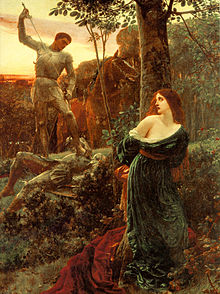




![Barney Oldfield's A Race for a Life [1913] with left to right:Hank Mann; Ford Serling; At St John and in foreground Mabel Normand Barney Oldfield's Race for a Life.jpg](http://upload.wikimedia.org/wikipedia/commons/thumb/0/01/Barney_Oldfield%27s_Race_for_a_Life.jpg/220px-Barney_Oldfield%27s_Race_for_a_Life.jpg)

